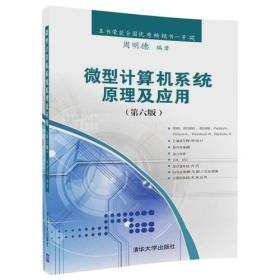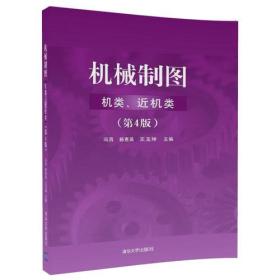
金融专业英语(第2版)
买书,就上二手书海官方企业店,清仓处理,真实库存,特价旧书,收藏店铺,优先发货! ps:下午三点之前的订单当天发货,之后明天发货,特殊情况除外。
¥ 8.7 1.7折 ¥ 49.8 八五品
库存248件
河南鹤壁
认证卖家担保交易快速发货售后保障
作者刘铁敏
出版社人民邮电出版社
出版时间2021-02
版次2
装帧平装
货号wk-706709
上书时间2024-11-23
- 在售商品 暂无
- 平均发货时间 10小时
- 好评率 暂无
- 最新上架
商品详情
- 品相描述:八五品
- 正版二手,几十万种图书无法都提供实拍图,但均为7-9成新,无缺页、会有瑕疵或者少许磨损 、或多或少都会有划线、笔记、涂写等,不影响使用。均不保证有光盘、卡片等,辅导习题类笔记较多;书籍有多封面的新老封面随机发货,内容一致,不影响使用,介意勿拍!图片孔网自动匹配,图片与标题不符时以及图片为套装,与标题不符时的下单前请咨询客服,望周知!
图书标准信息
- 作者 刘铁敏
- 出版社 人民邮电出版社
- 出版时间 2021-02
- 版次 2
- ISBN 9787115553423
- 定价 49.80元
- 装帧 平装
- 开本 其他
- 纸张 胶版纸
- 页数 234页
- 字数 392千字
- 【内容简介】
-
本书为培养既精通现代金融知识又能运用英语从事金融业务的复合型人才而编写。
全书共五部分,分为十二章。*部分包括*章至第三章,主要阐述货币、金融市场、政治与经济的相关内容;第二部分包括第四章至第六章,主要阐述中国的中央银行、商业银行及银行监管机构的相关知识;第三部分包括第七章至第九章,主要阐述证券、外汇交易、期货和期权等证券投资及风险管理的相关知识;第四部分包括第十章至第十一章,主要阐述保险基本原理、主要保险业务;第五部分包括第十二章,主要阐述银行函电的基本特点与写作、银行函电的主要应用实例。
本书配有教学课件、部分正文译文、习题参考答案、模拟试卷等辅助教学和学习资料,索取方式参见“更新勘误表和配套资料索取示意图”。
本书为本科院校金融相关专业的教材,因本书主体内容和金融学(货币银行学)课程内容相匹配,因而也可作为金融学课程双语授课参考教材。 - 【作者简介】
- 刘铁敏,辽宁石油化工大学经济管理学院,教授,硕士研究生导师。主要研究领域涉及投融资管理及财务评价分析、项目管理、宏观经济分析等,主讲微观经济学、宏观经济学、国际结算、国际金融、证券投资学、中级经济学等。
- 【目录】
-
Part One Money and Economics
Chapter 1 Money 2
Learning Objectives 2
Key Topics 2
Section 1.1 What Is Money 2
1.1.1 History of Money 2
1.1.2 Meaning of Money 4
Section 1.2 Functions of Money 5
1.2.1 Medium of Exchange 5
1.2.2 Unit of Account 5
1.2.3 Store of Value 6
1.2.4 Standard of Deferred Payment 7
Section 1.3 The Forms of Money 7
1.3.1 Commodity Money 8
1.3.2 Paper Money 8
1.3.3 Checks 10
1.3.4 Electronic or Digital Money 11
Section 1.4 Measuring Money 13
1.4.1 Theoretical and Empirical Definition of Money 13
1.4.2 The Federal Reserve’s Monetary Aggregates 14
1.4.3 Money Supply 14
Section 1.5 Monetary Policy 16
Notes 17
Exercises 18
Chapter 2 Financial Markets 21
Learning Objectives 21
Key Topics 21
Section 2.1 What Is Financial Market 21
2.1.1 Definition of Financial Market 21
2.1.2 Constituents of Financial Market 22
Section 2.2 Functions of Financial Markets 23
2.2.1 Intermediary Functions 23
2.2.2 Financial Functions 24
Section 2.3 Currency (Money) Markets 24
2.3.1 Participants 25
2.3.2 Functions of the Money Market 25
2.3.3 Common Money Market Instruments 26
Section 2.4 Capital Markets 27
2.4.1 Deeply View on Capital Market 28
2.4.2 Examples of Capital Market Transactions 29
2.4.3 Raising Capitals 30
Section 2.5 Derivative Products Markets 32
2.5.1 Future Contracts 32
2.5.2 Forward Contracts 33
2.5.3 Optional Contracts 34
Notes 35
Exercises 36
Chapter 3 Politics and Economics 39
Learning Objectives 39
Key Topics 39
Section 3.1 Macroeconomics & Politics 39
3.1.1 Games Between Policy Makers and Voters 40
3.1.2 Games Between Policy Makers 42
Section 3.2 An General Perspective on the Political Economy of Big Change 43
3.2.1 The Social-Political Context and Co-Evolution 43
3.2.2 Embeddedness 44
3.2.3 The Dilemma of Knowledge as a Product and a Resource 44
3.2.4 The Global Perspective on the Evolution 44
3.2.5 Evolutionary Social-Economic Intricacy 45
3.2.6 The Initiation of Self Re-Enforcing Growth 46
Section 3.3 Explosive Changes of Evolution and Communitarian Collective Ownership 46
3.3.1 The Fall-Variety Constraining Order 47
3.3.2 Self Organization and Economics 47
3.3.3 Communitarian Collective Ownership and Strategic Networks 48
Notes 50
Exercises 51
Part Two Banking Industry in China
Chapter 4 Central Bank—PBC 55
Learning Objectives 55
Key Topics 55
Section 4.1 The Reform of PBC 55
4.1.1 Definition of Central Bank 56
4.1.2 Transformation of PBC 56
4.1.3 Reform the Current Financial Structure 57
Section 4.2 The Functions of PBC 59
4.2.1 The Reason for Transformation 59
4.2.2 The Biggest Change of the Functions of PBC 60
4.2.3 The Main Functions of PBC 61
Section 4.3 The Instruments of Central Bank 64
4.3.1 Open Market Operation 65
4.3.2 Reserve Requirements 67
4.3.3 Rediscount 69
Notes 69
Exercises 70
Chapter 5 Commercial Banks 73
Learning Objectives 73
Key Topics 73
Section 5.1 Introduction 73
Section 5.2 What Is a Bank 75
5.2.1 Definition and Development of a Commercial Bank 75
5.2.2 How a Commercial Bank Makes and Creates Money 76
5.2.3 The Role of the Banking Sector in China 77
5.2.4 Vigorous Development of the Banking Sector 78
5.2.5 Increased Openness of the Banking Sector 79
Section 5.3 Intermediary Services 79
5.3.1 Settlement-payments and Funds Transfer 80
5.3.2 Plastic Money 80
5.3.3 International Settlement 82
Section 5.4 Loans 82
5.4.1 Definition and Categories of Loans 82
5.4.2 The Credit Process 83
5.4.3 Post-disbursement Management 85
5.4.4 Compound Interest vs. Simple Interest 87
Section 5.5 Banking on the Internet 87
5.5.1 Backgrounds 87
5.5.2 Advantages and Disadvantages of Online Banking 88
5.5.3 The Future Prospects of Online Banking 89
Notes 90
Exercises 91
Chapter 6 Supervision of Banking 93
Learning Objectives 93
Key Topics 93
Section 6.1 Importance and Objectives of Banking Supervision 93
6.1.1 The Role of Banks and Importance of Banking Supervision 93
6.1.2 Objectives of Banking Supervision 94
6.1.3 Preconditions for Effective Banking Supervision 95
Section 6.2 Licensing Process 96
6.2.1 Phases of the Process 96
6.2.2 Factors Evaluated by the Chartering Authorities 96
6.2.3 Basel Committee’s Requirements on Bank Licensing 97
Section 6.3 Arrangements for Ongoing Banking Supervision 97
6.3.1 Risks in Banking 97
6.3.2 Key Prudential Issues 99
6.3.3 Off-site Surveillance 104
6.3.4 On-site Examinations 104
Section 6.4 Dealing with Weak Banks 105
6.4.1 Symptoms and Cause of Bank Problems 105
6.4.2 Principles for Dealing with Weak Banks 106
6.4.3 Corrective Actions 106
6.4.4 Resolution Issues and Exit 107
6.4.5 Closure of the Bank: Depositor Pay-off 108
Notes 109
Exercises 110
Part Three Financial Instruments and Foreign Exchange
Chapter 7 Securities 114
Learning Objectives 114
Key Topics 114
Section 7.1 Stock 114
7.1.1 History 115
7.1.2 Shares 115
7.1.3 Types of Stock 116
7.1.4 Shareholder 116
7.1.5 Stock Market 117
7.1.6 Stock Trade 119
7.1.7 Stock Index 120
7.1.8 Stock Derivatives 121
7.1.9 Stock Price Determination and Fluctuations 121
Section 7.2 Bond 122
7.2.1 Issuance of Bond 123
7.2.2 Main Features of Bond 124
7.2.3 The Kinds of Bond 125
7.2.4 Bond Market 126
7.2.5 Bond Market Participants 127
7.2.6 Investing Risk in Bonds 128
Section 7.3 Fund 129
7.3.1 What Is Fund 129
7.3.2 Fund Constitution 129
7.3.3 Unit or Share Class 131
7.3.4 Investment Aims 131
7.3.5 Types of Risk 132
7.3.6 Kinds of Fund 132
Notes 136
Exercises 137
Chapter 8 Foreign Exchange 139
Learning Objectives 139
Key Topics 139
Section 8.1 Foreign Exchange Rate 139
8.1.1 Quotations 140
8.1.2 Exchange Rate Classification 141
8.1.3 Bilateral vs. Effective Exchange Rate 142
8.1.4 Exchange Rate Regime 143
8.1.5 Factors Affecting the Changes of Exchange Rate 144
8.1.6 Fluctuations in Exchange Rates 145
Section 8.2 Foreign Exchange Market 146
8.2.1 Market Participants 147
8.2.2 Characteristics 149
8.2.3 Determinants of Exchange Rates 149
8.2.4 Forex Signals 150
Section 8.3 Foreign Exchange Operation 151
8.3.1 Spot or Foreign Exchange Spot 151
8.3.2 Forward 151
8.3.3 Swap 151
8.3.4 Futures or Currency Futures 153
8.3.5 Option or Foreign Exchange Option 154
Section 8.4 Foreign Exchange Exposure 155
8.4.1 Types of Exposure 156
8.4.2 Measurement at Risk 157
8.4.3 Management at Risk 158
Notes 159
Exercises 160
Chapter 9 Futures & Options 161
Learning Objectives 161
Key Topics 161
Section 9.1 Futures Trading 161
9.1.1 What Is Futures 161
9.1.2 Margins 162
9.1.3 Settlement-physical vs. Cash-settled Futures 163
9.1.4 Futures Traders 164
Section 9.2 Futures Exchange 165
9.2.1 History of Futures Exchanges 166
9.2.2 Clearing and Settlement 166
9.2.3 Central Counterparty 167
9.2.4 Mark-to-Market 167
9.2.5 Financial Futures 168
Section 9.3 Options 170
9.3.1 Contract Specifications 170
9.3.2 Types 170
9.3.3 Option Styles 172
9.3.4 Trading 172
Notes 173
Exercises 173
Part Four Insurance
Chapter 10 To Understand Insurance 176
Learning Objectives 176
Key Topics 176
Section 10.1 What Is Insurance 176
10.1.1 Modern Insurance 177
10.1.2 Societal Effects 177
Section 10.2 Insurance Policy 178
10.2.1 General Features 178
10.2.2 Parts of an Insurance Contract 179
10.2.3 Industry Standard Forms 180
Section 10.3 Most Important Principles of Insurance 180
Section 10.4 Insurance Market 183
10.4.1 Insurance Companies 183
10.4.2 Reinsurance Companies 184
10.4.3 Insurance Intermediaries 184
Section 10.5 Insurance Business 185
10.5.1 Product Development 185
10.5.2 Distribution Channels 186
10.5.3 Underwriting 187
10.5.4 Loss Settlement 188
10.5.5 Reserve 189
10.5.6 Investment 190
Notes 190
Exercises 192
Chapter 11 Types of Insurance 194
Learning Objectives 194
Key Topics 194
Section 11.1 Personal Insurance 194
11.1.1 What Is Life Insurance 194
11.1.2 Health Insurance 196
11.1.3 Accident Insurance 197
Section 11.2 Property Insurance 198
11.2.1 History 198
11.2.2 Types of Coverage 199
11.2.3 Specific Types 199
11.2.4 US Property Insurance Claims 200
Section 11.3 Liability Insurance 201
11.3.1 What Is Liability Insurance 201
11.3.2 Types of Liability Insurance 202
11.3.3 Insurable Risks 203
Section 11.4 Reinsurance 203
11.4.1 Definition 203
11.4.2 Methods of Reinsuring 204
11.4.3 Forms of Reinsurance 204
Notes 206
Exercises 207
Part Five Banking Letters
Chapter 12 The Exercise of Banking Letters 210
Learning Objectives 210
Key Topics 210
Section 12.1 What Is a Banking Letter? 210
Section 12.2 Basic Principles of Banking Letter Writing 212
Section 12.3 The Format of Banking Letter 214
12.3.1 Standard Parts 214
12.3.2 Optional Parts 217
12.3.3 Letter Style 219
12.3.4 Envelope Addressing 222
Section 12.4 Main Types of Banking Letters 224
12.4.1 Letters Concerning Banks Relationship 224
12.4.2 Letters Concerning Bank Accounts and Bank Accounting 226
12.4.3 Letters Concerning Banking Business 227
Notes 229
Exercises 230
主要参考文献 233
更新勘误表和配套资料索取示意图 234
点击展开
点击收起
相关推荐
— 没有更多了 —


















以下为对购买帮助不大的评价